Processes¶
Abstract
- Process Concept
- Process Control Block
- Process State
- Process Creation
- Process Termination
- Process and Signal
- Process Scheduling
Process Concept¶
Process: a unit of resource allocation and protection
- A process is a program in execution
一个在执行的程序(ELF 文件),跑起来后要分配资源(CPU,内存,IO),就成为了一个进程。 - Multiple processes can be associated to the same program.
一个 program 可以运行多次,每次运行都产生一个新的进程。 - A running system consists of multiple processes.
- “job” and “process” are used interchangeably in OS texts.
Process includes(其中前四项在 ELF 中,堆和栈是运行时的信息在 ELF 之外)
- code (also called the text)
initially stored on disk in an executable file - data section
global variables (.bssand.datain x86 assembly) - program counter
points to the next instruction to execute (i.e., an address in the code) - content of the processor’s registers
- a stack
- a heap
Memory Layout of a C Program
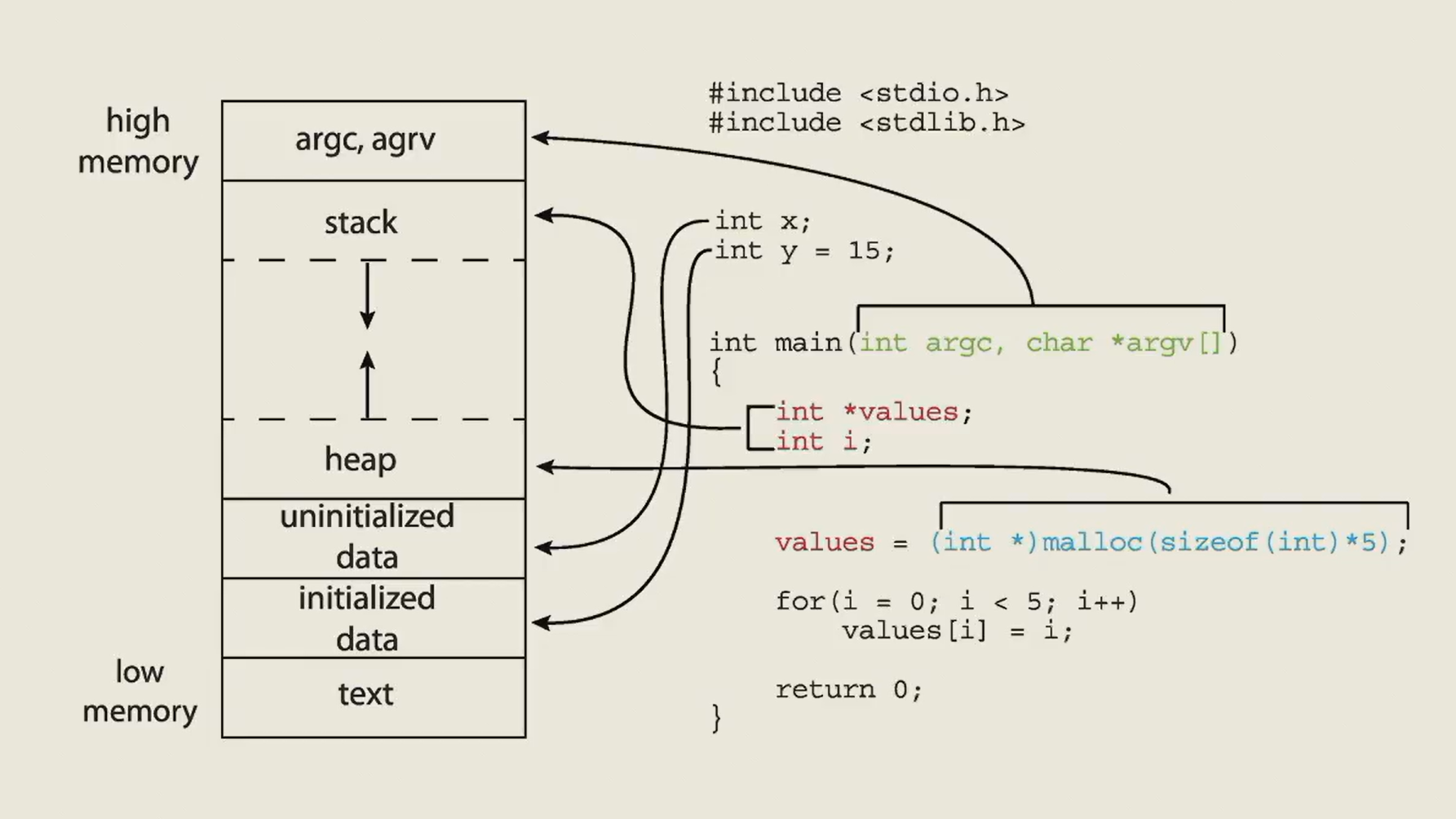
int x;unitialized data,int y = 15;initialized data- 临时变量在栈上,malloc 在堆上。
The Stack¶
每个函数运行时都会分配栈的一部分,即一个栈帧 stack frame.
Simple Runtime Stack
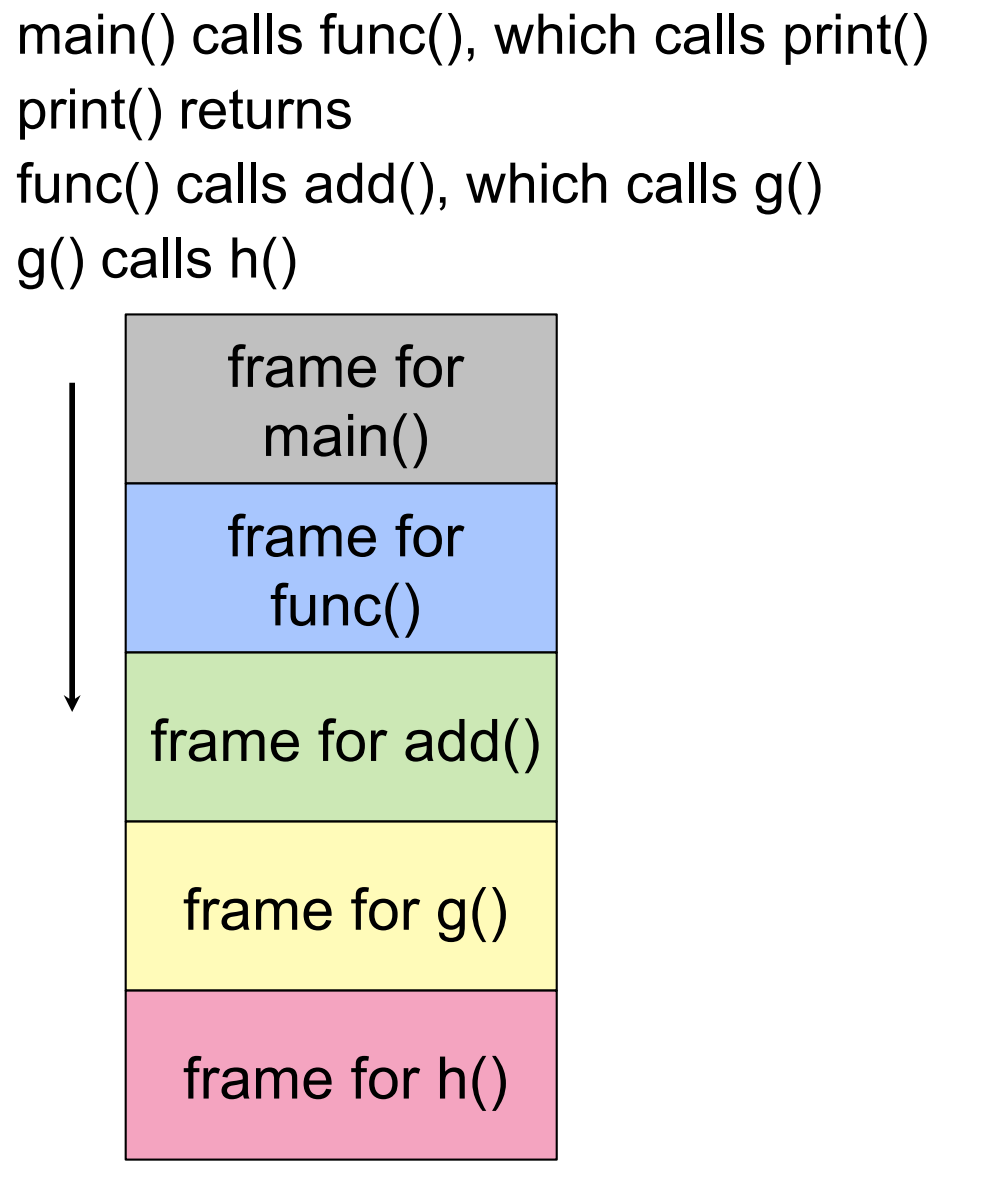
引入栈是为了解决函数调用的问题。
Any function needs to have some “state” so that it can run.
- Parameters passed to it by whatever function called it
- Local variables
- The address of the instruction that should be executed once the function
returns: the return address - The value that it will return
栈从上(高地址)往下(低地址),堆从下往上。如果碰面就发生了溢出。
Runtime Stack Growth
如果我们运行一个程序两次,内存布局不一定相同。
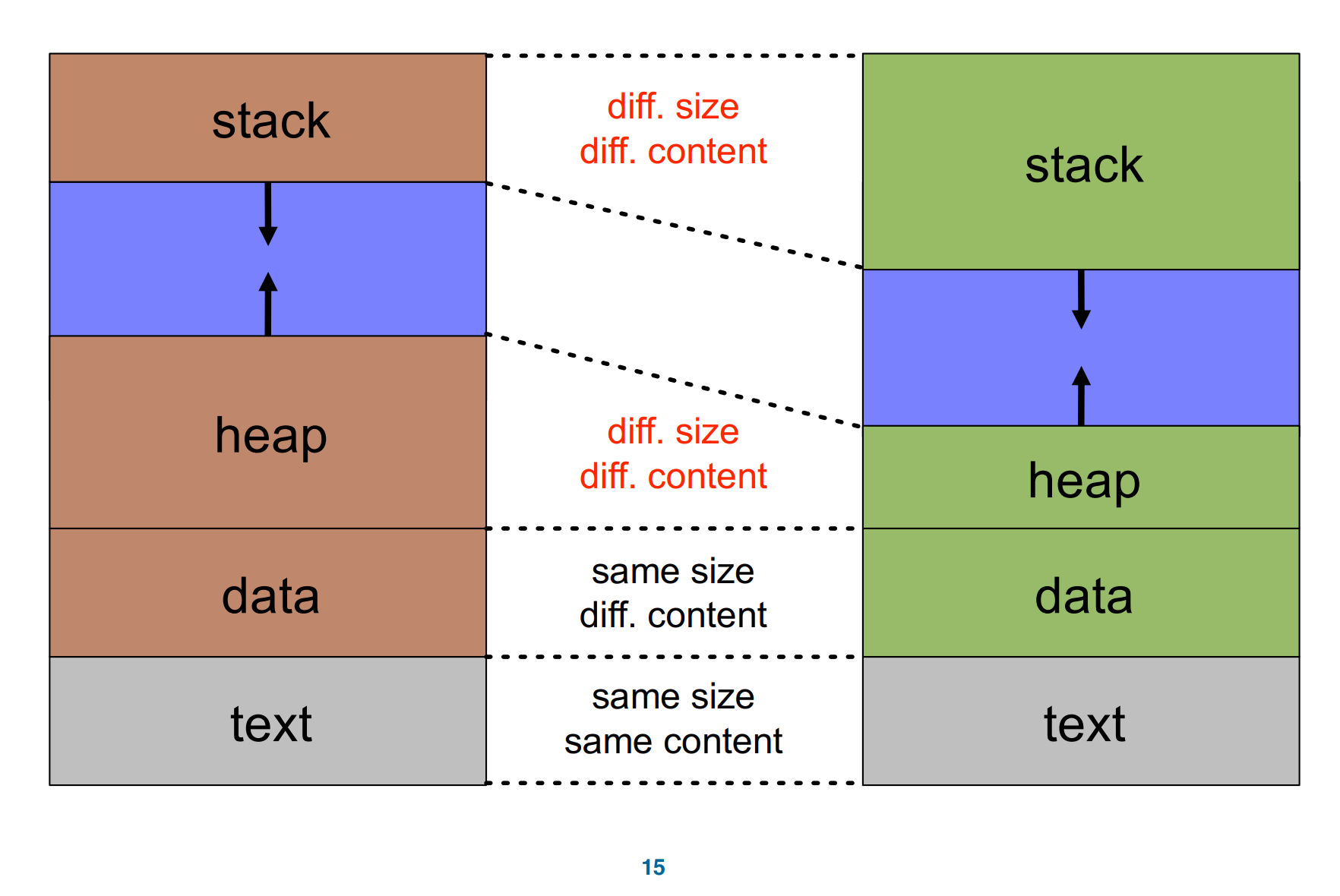
stack 和 heap 称为动态内存,相当于是 OS 给进程的两张草稿纸,用多少取决于当前的执行状态。
Process Control Block (PCB)¶
Each process has and only has a PCB. Information associated with each process.
控制块,每一个进程有且只有一个 PCB. 整个 PCB 存在内存里。

- Process state
- Program counter
- CPU registers
- CPU-scheduling information
- Memory-management information
- Accounting information
- I/O status information
Represented by the C structure task_struct.

所有的 task_struct 是通过链表串起来的。
Process State¶
As a process executes, it changes state
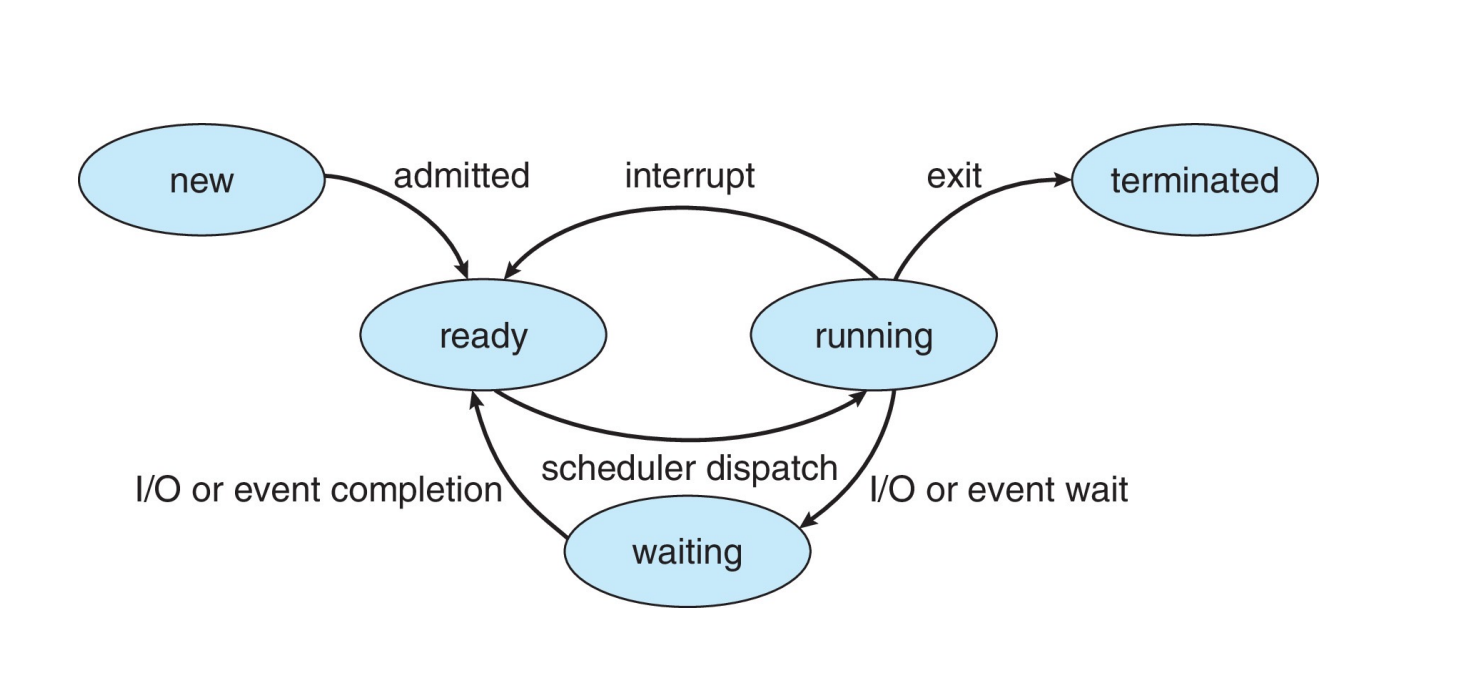
- New: The process is being created
- Running: Instructions are being executed
- Waiting: The process is waiting for some events to occur
- Ready: The process is waiting to be assigned to a processor
- Terminated: The process has finished execution
Process Creation¶
A process may create new processes, in which case it becomes a parent.
Each process has a pid (process ID).
-
ppid refers to the parent’s pid
Process Tree

-
The child may inherit/share some of the resources of its parent, or may have entirely new ones.
子进程继承父进程的资源(如打开的文件) - A parent can also pass input to a child.
- Upon creation of a child, the parent can either
- continue execution, or
- wait for the child’s completion
- The child could be either
- a clone of the parent (i.e., have a copy of the address space), or
- be an entirely new program
The fork() System Call¶
fork() creates a new process.
The child is is a copy of the parent, but
- It has a different pid (and thus ppid)
- Its resource utilization (so far) is set to 0
fork()returns the child’s pid to the parent, and 0 to the child.
fork会把 child 的 pid 返回给 parent,给 child 返回 0. (how to implement?)- Both processes continue execution after the call to
fork()
Example
What does the following code print?
int a = 12;
if (pid = fork()) { // PARENT
// ask the OS to put me in waiting
sleep(10);
fprintf(stdout,”a = %d\n”,a);
while (1);
} else { // CHILD
a += 3;
while (1);
}
fork 之后变量的值相同,但并不是同一个变量。(相当于一份拷贝)


Example
How many processes does this C program create?
The answer should be 12.The execve() System Call¶
execve() system call used after a fork() to replace the process’ memory space with a new program.
execve() 会把之前的进程资源全部丢掉,再 load 新的 binary,映射新的内存,分的新的堆和栈,常接在 fork() 后面使用。
the pros and cons of fork()
- Pros
- 简洁:不需要参数
- 分工:
fork搭起骨架,exec赋予灵魂 - 联系:保持进程与进程之间的关系
- Cons
- 复杂:两个系统调用
- 性能差
- 安全问题
- Clone syscal: fork + exec
Process Terminations¶
A process terminates itself with the exit() system call.
调用 exit 后终止进程,释放资源。
- This call takes as argument an integer that is called the process’s exit/return/error code.
- All resources of a process are deallocated by the OS.
exit终止之后会把资源都释放。 - A process can cause the termination of another process.
- Using something called “signals” and the
kill()system call
- Using something called “signals” and the
- A parent can wait for a child to complete.
wait()andwaitpid()
Processes and Signals¶
A process can receive signals. And each signal causes a default behavior in the process.
e.g. 当我们想要终止一个程序时,我们可以敲入 Ctrl+C,这相当于对当前进程发送了 SIGINT 信号,就会终止当前进程。
Manipulating Signals
- The
signal()system call allows a process to specify what action to do on a signal
我们可以修改有些信号的处理程序。 - Signals like
SIGKILLandSIGSTOPcannot be ignored or handled by the user, for security reasons
Zombie¶
When a child process terminates
- Remains as a zombie in an “undead” state.
- Until it is “reaped” (garbage collected) by the OS.
一个进程结束了,但依然还在占用资源。(他可以释放自己的资源,除了 PCB 是不能由自己释放的)
Get rid of zombies: When a child exits, a SIGCHLD signal is sent to the parent.
我们可以通过给 SIGCHILD 信号加一个 handler,里面调用 wait 来回收进程。
Orphans¶
An orphan process is one whose parent has died.
子进程还在运行时,它的父进程终止了,那么它就成为了一个孤儿进程。
pid 1 会收养 orphan,因此孤儿进程不会成为 zombie。(pid 1 进程一定会回收子进程)
这里存在一个 trick,可以创建一个与当前进程的父进程完全无关的进程:先 fork() 一个进程,随后杀死自己,那么当前进程的子进程就会被 pid 1 收养,就脱离了原来的父进程。
Process Scheduling¶
一个 CPU 只能运行一个进程,我们希望提高使用效率。进程处于 Waiting 状态的时候 CPU 如果跟着等待是对资源的浪费。
Process scheduler selects among ready processes for next execution on CPU core.
Maintains scheduling queues of processes:
- Ready queue - set of all processes residing in main memory, ready and waiting to execute.
只有一个 ready queue, ready queue 不会空,因为 IDLE 进程一直在里面。 - Wait queue - set of processes waiting for an event.
很多个等待队列,一个被等待的事件对应一个等待队列。当我们这个事件到来之时,我们从事件对应的队列选择一个进程。 - Processes migrate among the various queues.
Ready and Wait Queue
当我们想要插入一个新的进程时,直接通过双向链表接上即可。通过偏移量找到对应地址,并通过强制类型转换得到 task_struct。
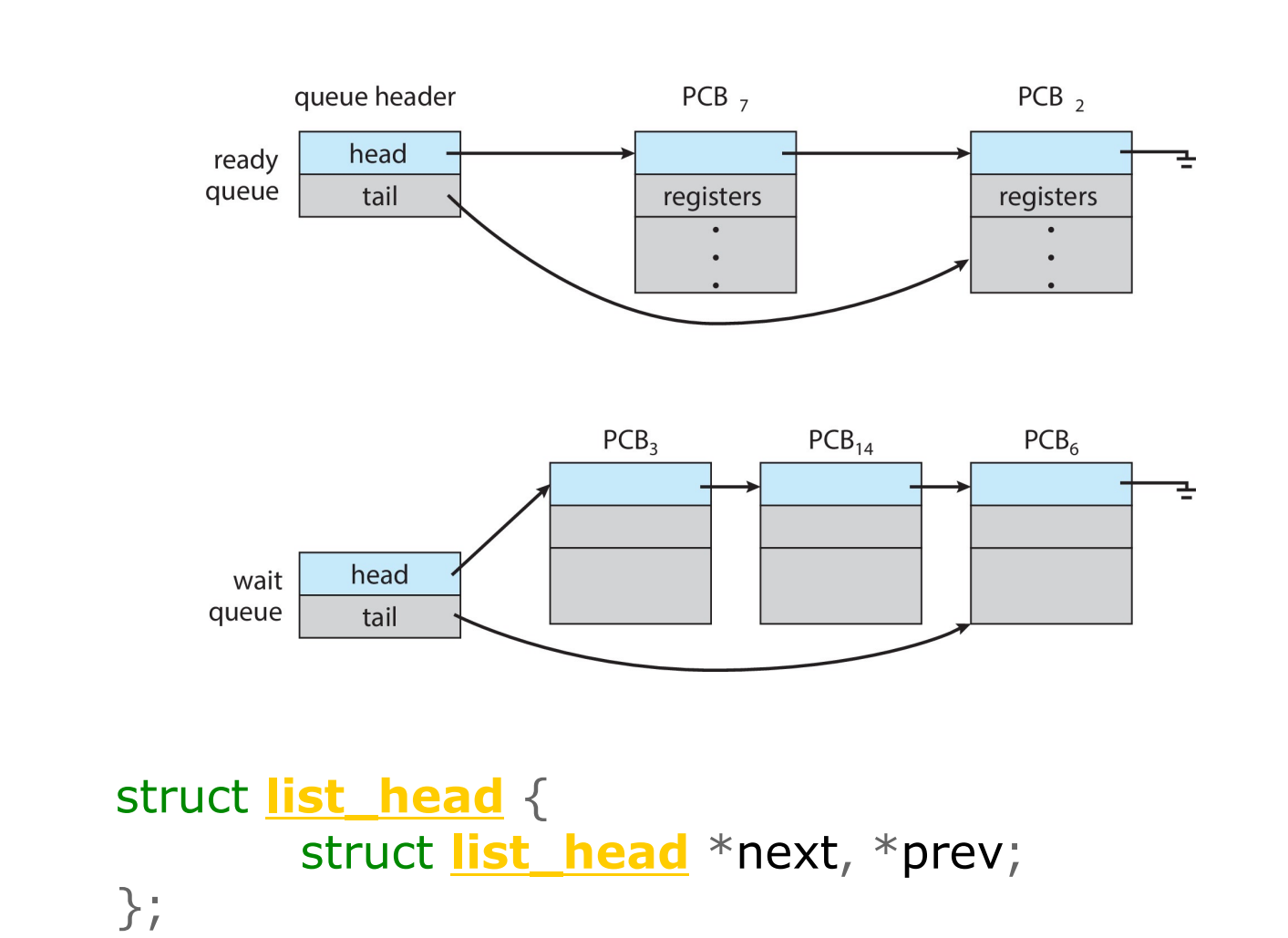

首先从 ready queue 中拿一个进程去 CPU,
- 如果到时间了(过了一个时间片),就直接把自己放到 ready queue;
- 如果要等待 I/O 事件,就把自己放进 wait queue,等待 I/O 事件发生后再把自己唤醒,放回 ready queue.
- 创建子进程之后子进程放到 ready queue 中,如果调用了
wait,那么父进程等待子进程终止后,进入 ready queue.
Context Switch¶
A context switch occurs when the CPU switches from one process to another.

- When CPU switches to another process, the system must save the state of the old process and load the saved state for the new process via a context switch.
上下文切换时,存储当前进程的状态,并加载目标进程的状态。 - Context of a process represented in the PCB
state 主要指寄存器的值,页表... - Context-switch time is overhead; the system does no useful work while switching. 上下文切换不做有意义的事情,是 pure overhead.

cpu_context在task_struct中,且有一个偏移量。因此这里我们先 load 这个偏移量到寄存器x10。x8指向要被换出去的进程的task_struct, 随后我们将要存的寄存器存入task_struct中。- 随后
x8指向要被换进来的进程的task_struct, 随后我们将要取的寄存器从task_struct中取出。
为什么 switch 中只保存部分寄存器?
我们上下文切换时会调用 cpu_switch_to 函数。其他寄存器在 arm 架构中属于 caller-saved registers,因此不用在 cpu_switch_to 中保存,cpu_switch_to 中存的是 callee-saved registers.
一个进程在内核中运行时重要的 data structures:

-
内核栈低地址处有
thread_info, 指向task_struct, 内有cpu_context.注意到
task_struct并不在栈上,只是有指针指向他。(因为task_struct太大了,因此放了个指针。后来大家认为栈位置暴露后就能找到task_struct的地址,因此后来指针也没了) -
内核栈高地址处有
pt_regs, 保存了寄存器的值。(不是cpu_context中的寄存器)
从用户空间到内核空间时,也会有一次上下文切换,这时候会保存用户空间的所有寄存器,然后加载内核空间的寄存器。 -
stack frame
执行函数调用的时候,会有一个栈帧,先存储返回地址。所以栈一旦切换,程序对应的返回地址也被切换了。
Context switching between two kernel threads.
context 一定在 kernel mode 执行。为了安全,上下文切换涉及到寄存器的修改。
Context Switch Scenarios - kernel
When and where are the context (regs) been saved?
- When: In
context_switch, more specifically, in cpu_switch_to - Where: In PCB, more specifically, in cpu_context
- All regs are running kernel code, termed kernel context
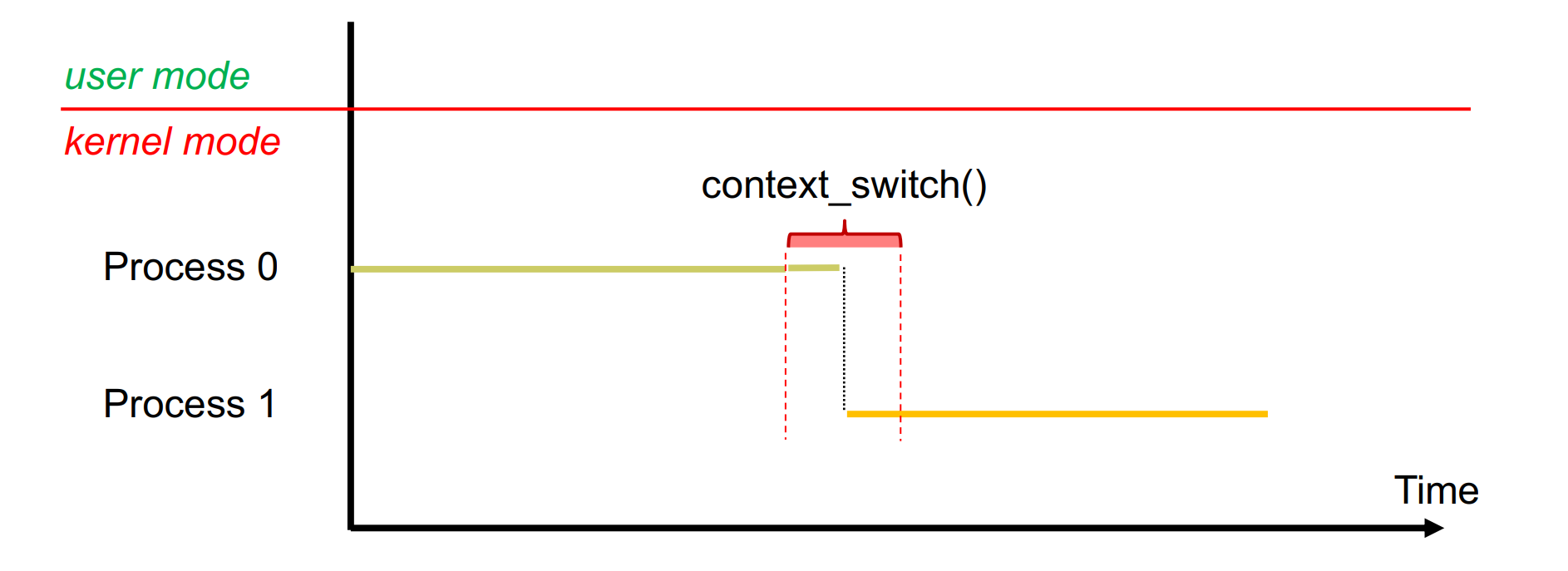
Context Switch Scenarios - user
- When and where are the user context (regs) been saved?
- When:
kernel_entry(进入内核时存寄存器),kernel_exit(离开内核时取出寄存器); Where: per-thread kernel stack, more specificallypt_regs
- When:
- When and where are the kernel context (regs) saved saved?
- When:
cpu_switch_to; Where:cpu_context
- When:
fork() return values
How does fork() return two values?
- 调用
fork后会调用do_fork函数,随后调用copy_process最后进入copy_thread函数。它会把task_struct里的thread进行拷贝。 -
对于父进程,
fork相当于是一个系统调用。通过kernel_entry进入内核态,将用户态上下文存在pt_regs中。返回值(pid)通过pt_regs的寄存器值返回。
(系统调用的返回值在x0中,我们把这个值存到pt_regs中,这样后面从内核切换到用户态时就可以加载返回值到x0)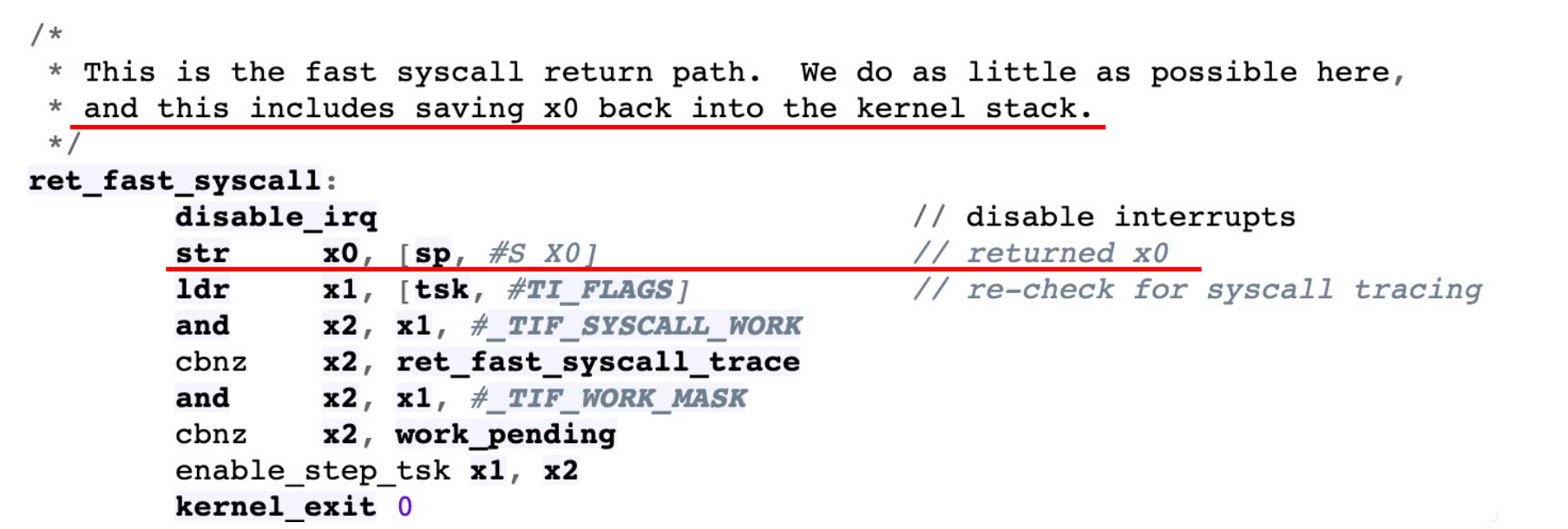
-
对于子进程,会调用
copy_thread函数。他会拷贝寄存器,并把regs[0]=0。这样在后续kernel_exit后就可以把值返回到子进程。
注意到此时子进程的pc(ARM 里的pc类似于 RISC-V 里的ra,存储返回地址)被设置为了ret_from_fork(调用ret_to_user,再调用kernel_exit),sp被设置为了pt_regs.

-
注意到当
fork之后,我们从父进程返回,此时子进程处于 READY 状态,等待 CPU 的调度。第一次调度时子进程在切换上下文之后会从ret_from_fork开始执行,随后调用ret_to_user,再调用kernel_exit(把存在pt_regs里的寄存器全部恢复),从而返回 0。
调用 write 的系统调用会不会有上下文切换
不会,只是从 user space 通过 kernel_entry 进入 kernel space,执行对应的 handler,执行完后通过 kernel_exit 返回 user space。
Takeaway¶
Takeaway
- Process Concept
- Process vs Program
- Process Control Block
task_struct
- Process State
- Five states, who has a queue
- How to create and terminate a process
- Process Scheduling
cpu_switch_to- Where are registers saved?
fork- Why returns two values?